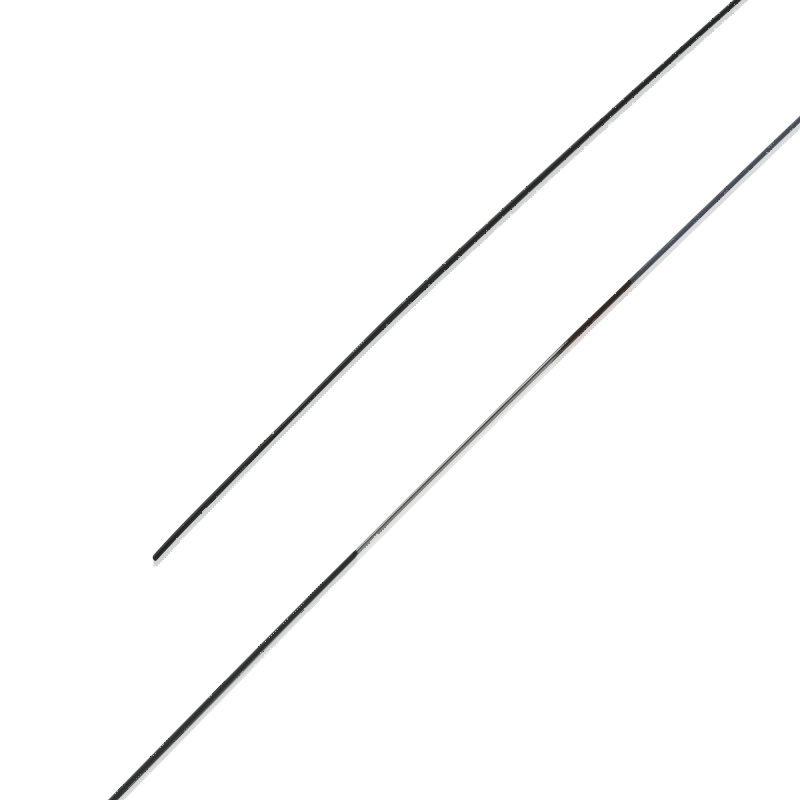PTFE Guidewire
A PTFE (Polytetrafluoroethylene) Guidewire is a specialized medical device used in various diagnostic and interventional procedures to navigate through anatomical structures with precision. Crafted with precision and using high-quality materials, this guidewire offers exceptional flexibility, durability, and maneuverability, making it an indispensable tool for healthcare professionals performing a wide range of procedures.
| Material | Structure Composition | Outer Diameter | Length | Configuration |
| Stainless Steel | PTFE Spring + Stainless Steel Core Wire | 0.018” 0.021” 0.035” 0.038” | Customizable | Straight,J3 |
- PTFE Coating: The PTFE coating on the guidewire provides excellent lubricity, facilitating smooth advancement through the vasculature and reducing the risk of vessel trauma.
- Flexible Core Wire: The flexible core wire provides exceptional flexibility and support, allowing for precise navigation through anatomical structures.
- Radiopaque Markers: Radiopaque markers on the guidewire enhance visibility under fluoroscopy, aiding in the accurate placement of catheters and other medical devices.
- Variety of Lengths and Diameters: The guidewire is available in various lengths and diameters to accommodate different procedural requirements and patient anatomies.
With its PTFE coating, flexible core wire, and radiopaque markers, the PTFE Guidewire ensures smooth navigation and optimal procedural outcomes for patients undergoing various diagnostic and interventional procedures. Designed to meet the highest standards of quality and reliability, this guidewire is an indispensable tool for healthcare professionals across different medical specialties.
- Peripheral Vascular Interventions: Provides access and facilitates the navigation of catheters and other devices for procedures such as angiography, angioplasty, and stenting.
- Neurointerventional Procedures: Enables access to the cerebral vasculature for procedures such as embolization, thrombectomy, and aneurysm coiling.
- Urological Procedures: Facilitates access to the urinary tract for procedures such as ureteral stent placement and stone retrieval.
- Gastrointestinal Procedures: Aids in the navigation of catheters and devices for procedures such as endoscopic retrograde cholangiopancreatography (ERCP) and endoscopic ultrasound (EUS).
Related products
-
Movable-Core Guidewire
The Movable-Core Guidewire is composed of a flexible outer wire and a movable core, both typically made of materials such as stainless steel or nitinol. The outer wire provides support and flexibility for navigating through blood vessels, while the movable core allows for independent movement within the outer wire, providing precise control and maneuverability during procedures. Some wire guides may feature a hydrophilic coating to facilitate smooth advancement through the vasculature and reduce the risk of vessel trauma. Additionally, radiopaque markers on the wire guide enhance visibility under fluoroscopy, aiding in the accurate placement of catheters and other medical devices.
-
Peripheral Micro Guidewire
The peripheral micro guidewire is a specialized medical device used in various diagnostic and interventional procedures to navigate through the peripheral vasculature with precision. Composed of high-quality materials, this guidewire offers exceptional flexibility, durability, and maneuverability, making it an essential tool for healthcare professionals performing peripheral vascular interventions.
-
Peripheral Vascular Guidewire
The Demax Peripheral Vascular Guidewire is meticulously crafted using high-quality materials such as stainless steel or tungsten-containing polyurethane tubes, surface coated with hydrophilic coating, known for their exceptional strength, flexibility, and biocompatibility. These materials undergo precision manufacturing processes to achieve the desired diameter, length, and mechanical properties required for effective vascular navigation. The guidewire is coated with a hydrophilic coating to enhance lubricity and reduce friction, ensuring smooth advancement through vascular pathways. With its advanced design and composition, the Demax Peripheral Vascular Guidewire promises to revolutionize peripheral vascular interventions. It offers healthcare professionals a reliable and versatile tool for navigating complex vascular anatomy and delivering optimal patient care.
-
Angiography Guidewire
Angiography guidewires manufactured by Demax are meticulously crafted from high-grade materials such as stainless steel or nitinol. These materials offer excellent mechanical properties, including flexibility, durability, and kink resistance, essential for navigating through tortuous vessels and performing intricate vascular procedures with precision. Additionally, some guidewires feature hydrophilic coatings to enhance lubricity and minimize friction during navigation, further improving procedural success rates and patient comfort. With their advanced composition and precision engineering, Demax angiography guidewires set the standard for excellence in vascular intervention tools, empowering healthcare professionals to deliver superior care to their patients.




